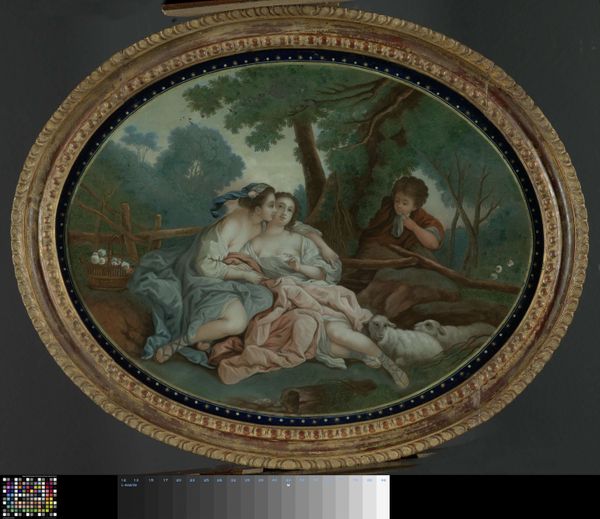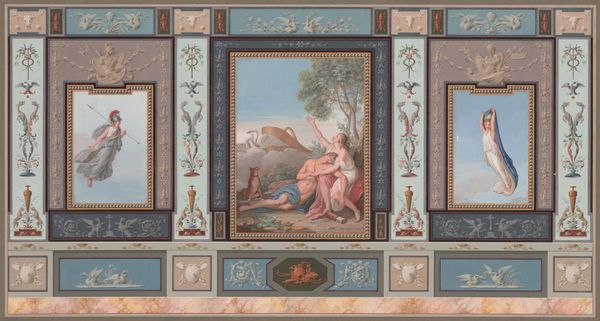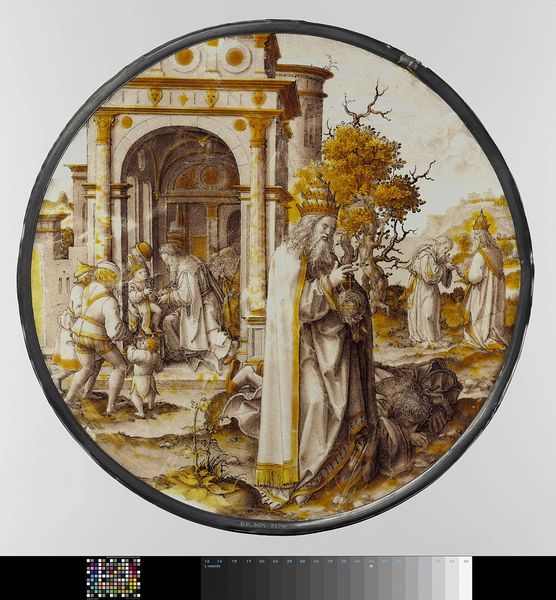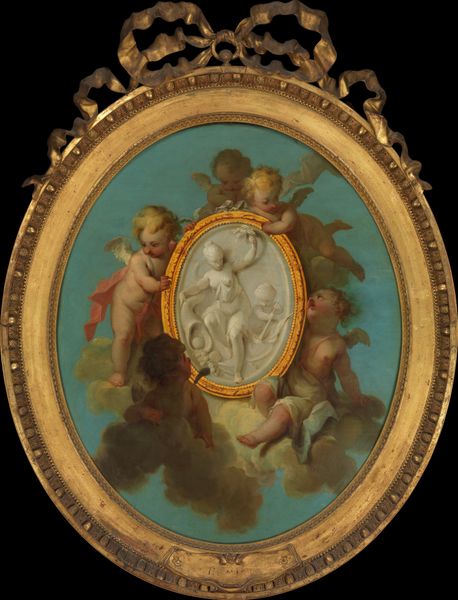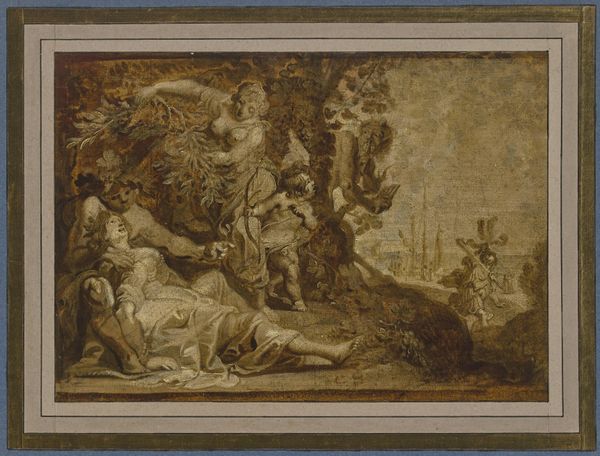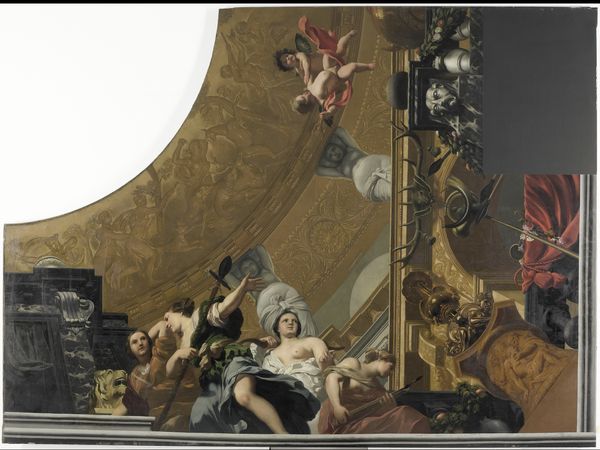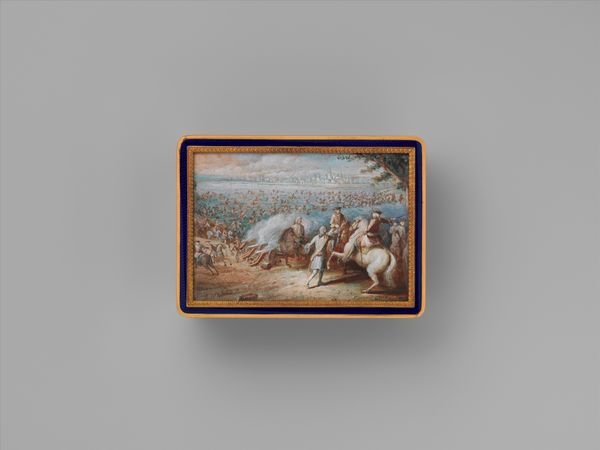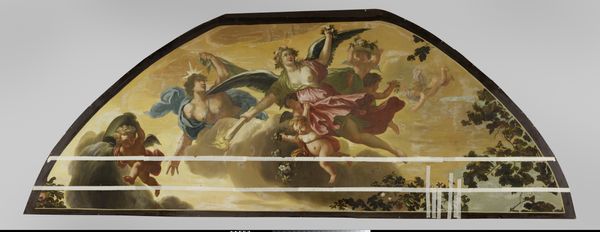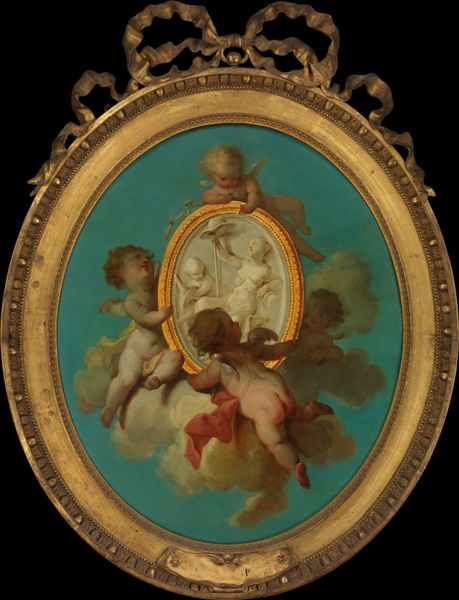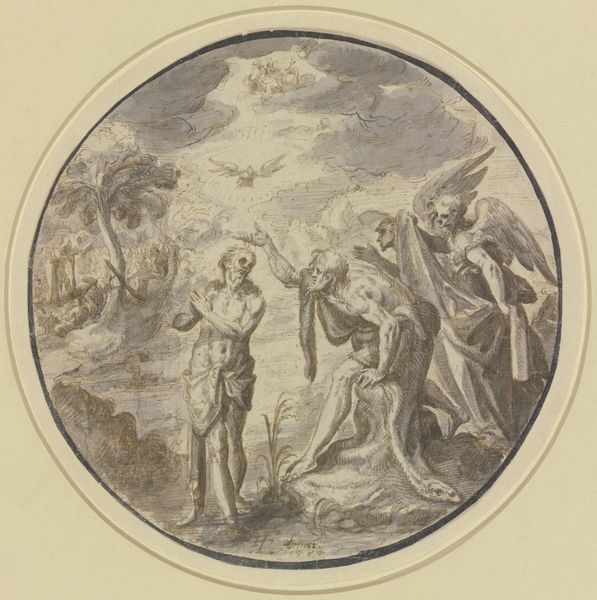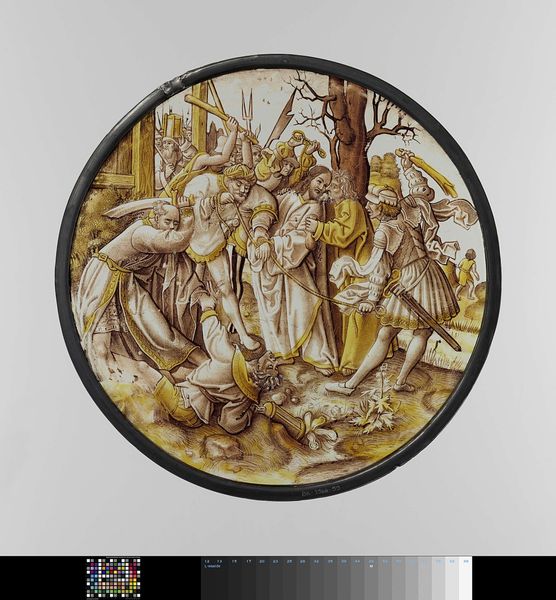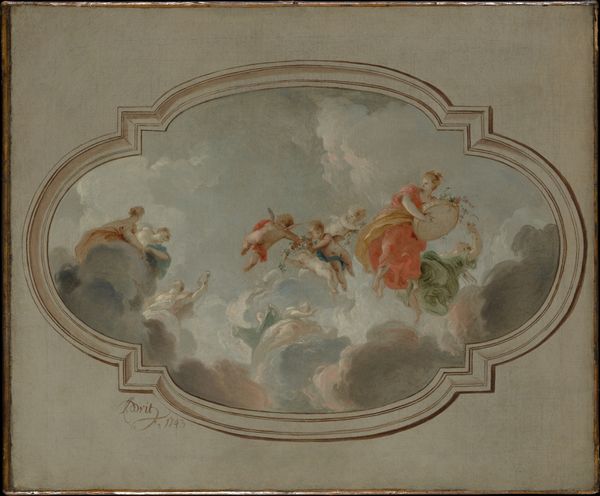
Dimensions: height 33.2 cm, width 40.1 cm, depth 3.3 cm
Copyright: Rijks Museum: Open Domain
Editor: This tempera painting is titled "Two Fête Galante Scenes," created around 1795 by an anonymous artist. It's hard to ignore the dreamlike quality of the figures, especially the person seemingly asleep or perhaps ill, nestled amongst what seems to be an exotic landscape. What catches your eye when you look at it? Curator: Formally, the arrangement adheres to established principles of composition prevalent during the late Rococo and early Neoclassical periods. Notice the oval format and how it dictates a certain visual harmony. Observe the palette - soft pastels dominate, a deliberate choice to evoke a sense of refinement and elegance. Editor: So, the color choices aren't just about aesthetics? Curator: Precisely. The pastel hues contribute to the artwork’s overall atmosphere. Consider also the figuration; idealized bodies are draped in classical garb. They are strategically placed to lead the eye. Tell me, what do you make of the texture rendered using tempera? Editor: Well, tempera often gives a matte finish... Here, that flatness accentuates the figures, almost as if they are reliefs applied to a shallow background. Curator: Good observation. How might you describe the way the bodies are painted? Editor: Smooth and almost porcelain-like...it reminds me a little of... Curator: A carefully constructed surface, absent of aggressive brushwork. Any expressive marks or visible emotion might ruin the sense of order. This visual and conceptual emphasis shows commitment to technique above perhaps capturing any immediate expression or sensation. The medium becomes part of the message. Editor: This has totally changed my view. I was stuck on the subject, but now the surface, texture and form become key. Curator: Precisely. Sometimes it is a more careful examination of form that helps to unlock content.
Comments
rijksmuseum about 2 years ago
⋮
In reverse painting on glass, the image is painted on the back –foreground details first (in reverse to normal practice). In the 18th century, Chinese painters, particularly in Canton, specialized in this technique. One such artist copied these two scenes for Van Braam Houckgeest after the work of the renowned French painter François Boucher. They are still in their original 18th-century frames.
Join the conversation
Join millions of artists and users on Artera today and experience the ultimate creative platform.
